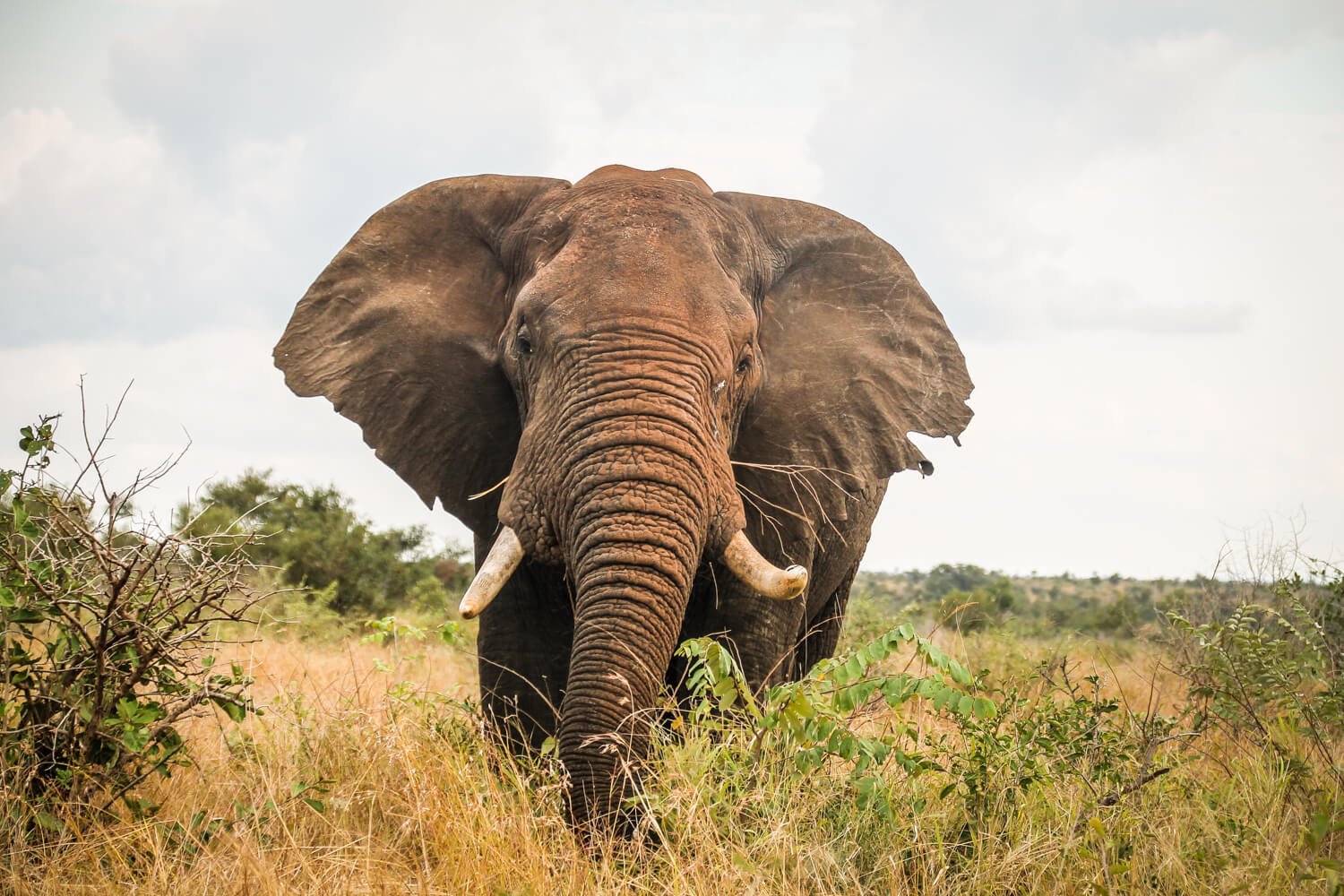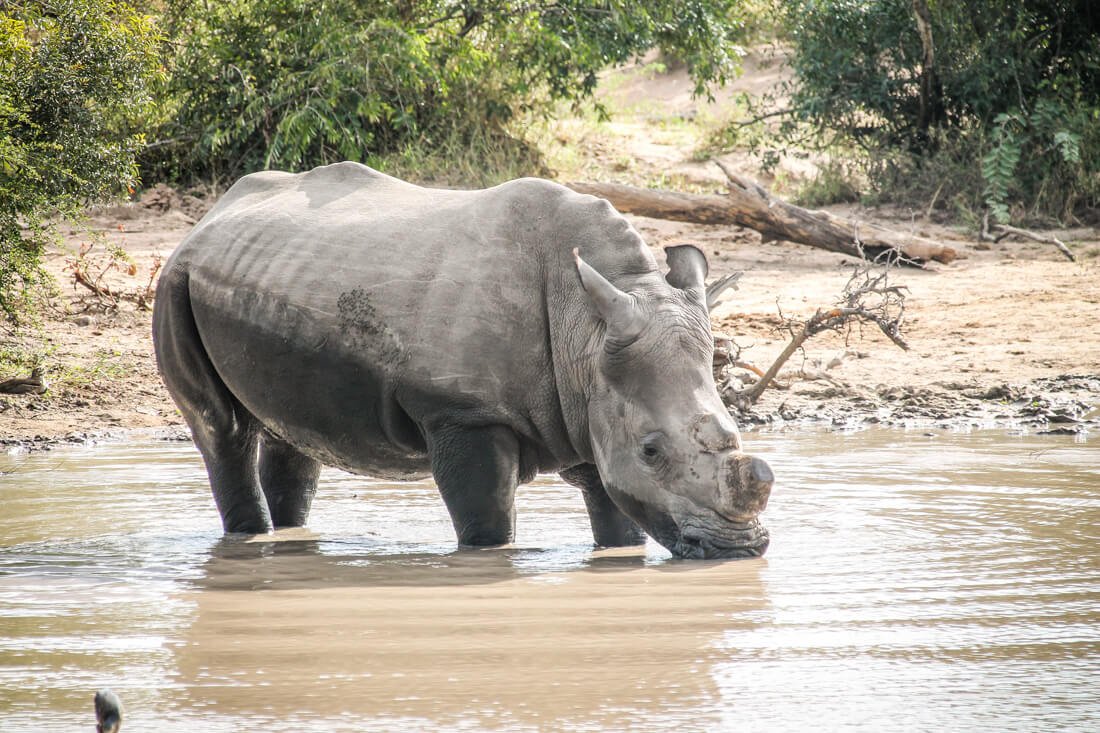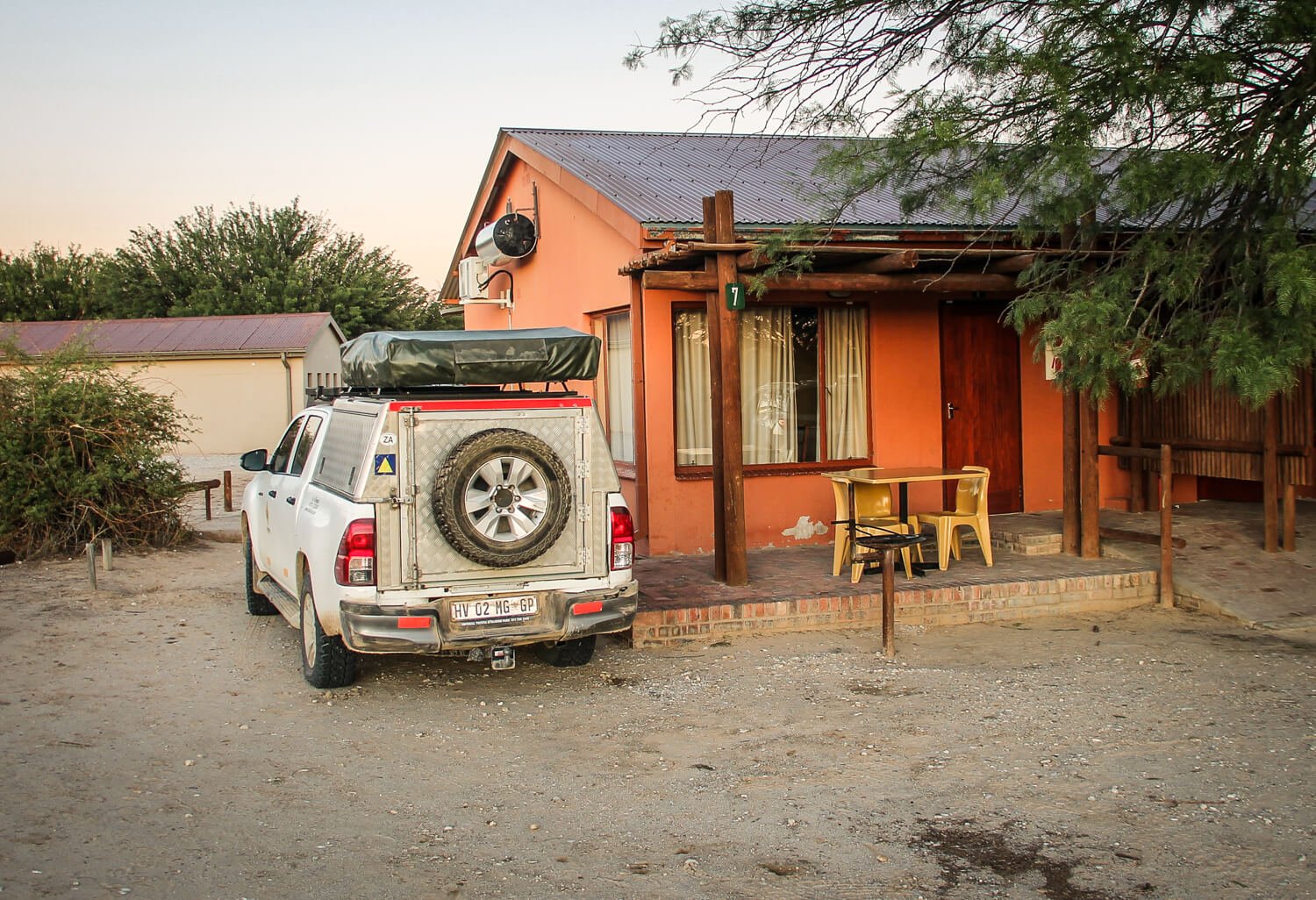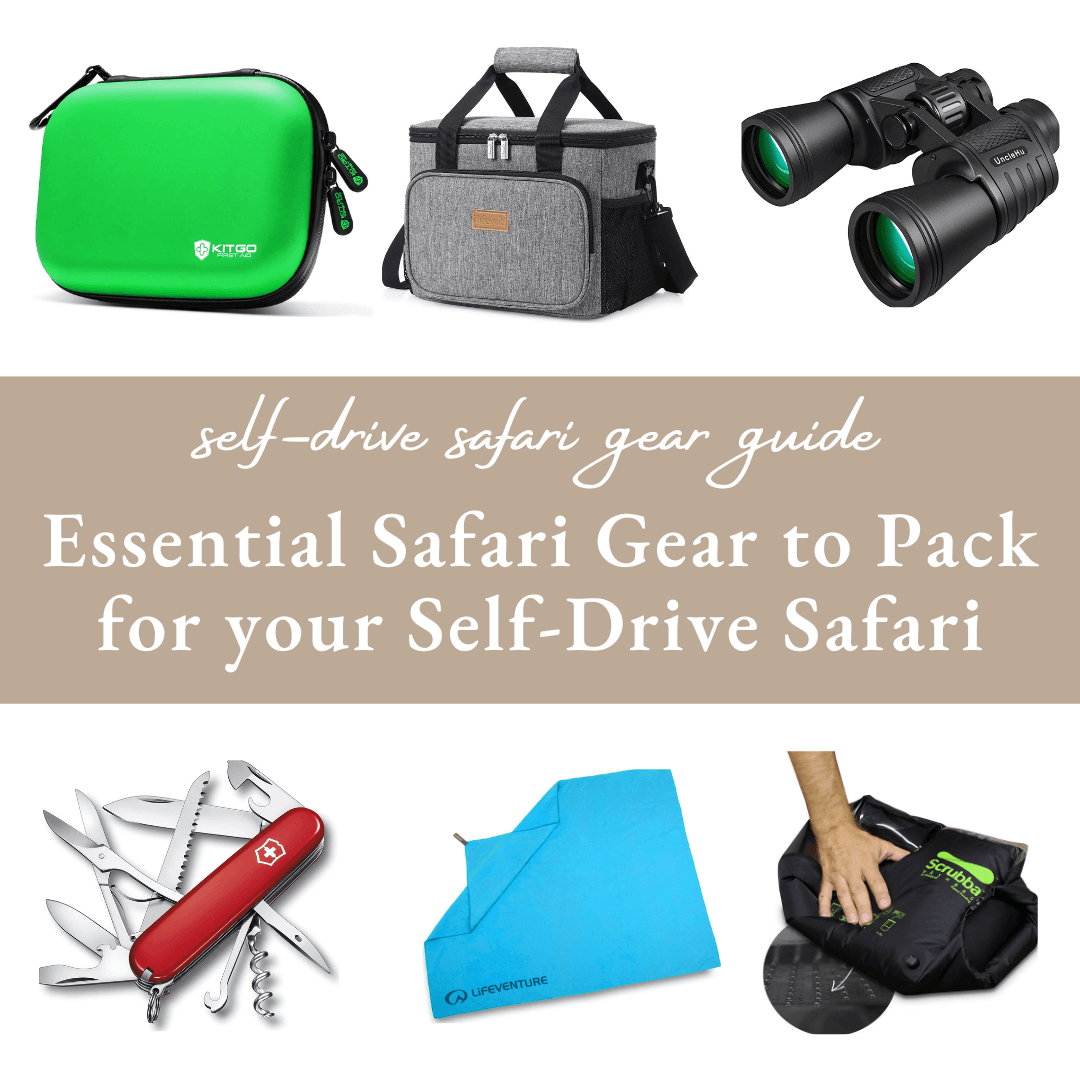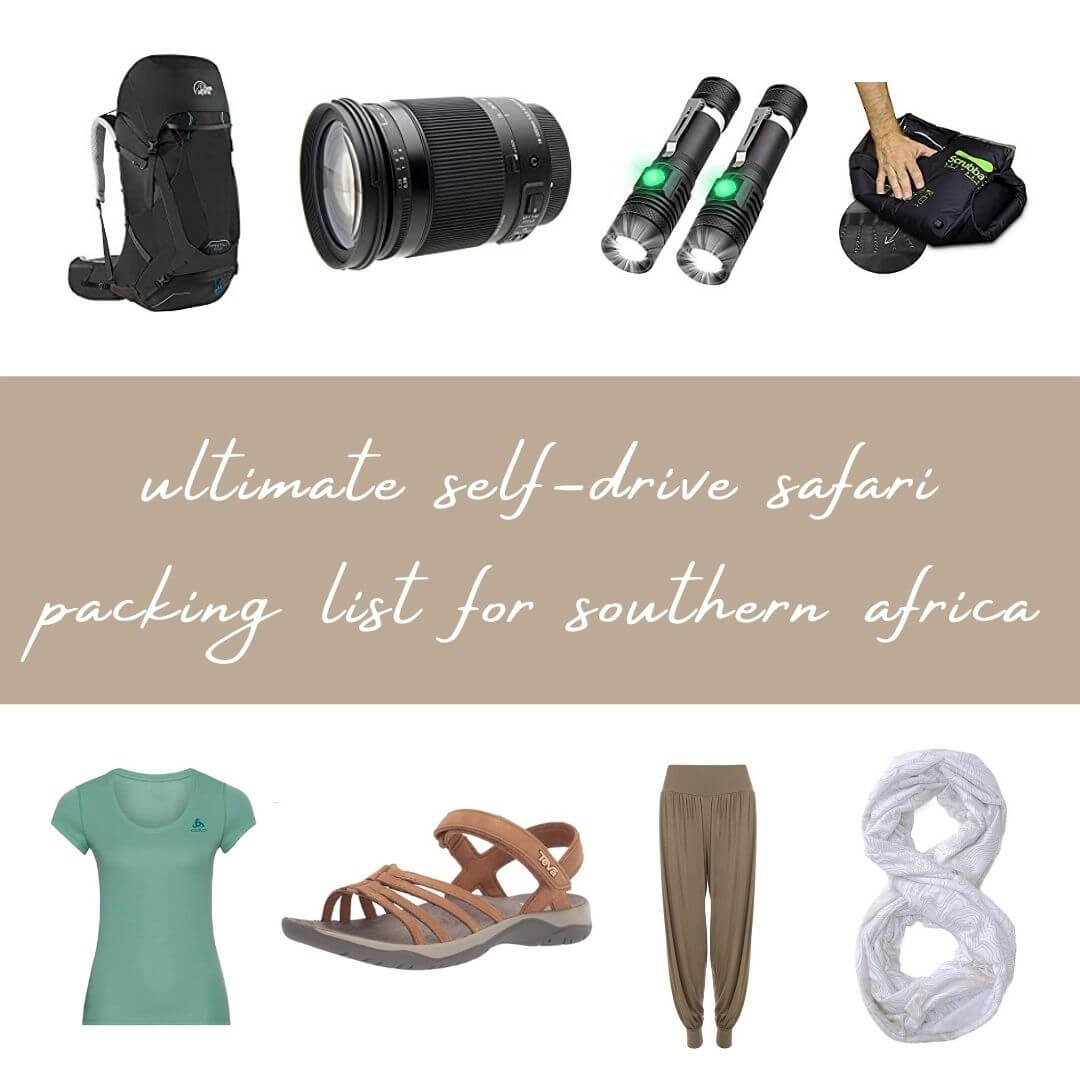6 Best Parks for Your First Self-Drive Safari in South Africa
Just to let you know… This post (probably) contains affiliate links, including Amazon Associates links, and we may receive a small commission if you click one. This is at no extra cost to you and allows us to keep our blog running.
You've decided you want to go on a safari in South Africa. But now you're realising that was the easy part. Now you’re wondering; where should I go for my first safari?
There are great national and private reserves in South Africa. Some are great for a day trip while others you can easily spend a week or even more. So where should you go?
But no matter which park you’ll choose, going on a self-drive safari in South Africa is an experience you’ll never forget. With South Africa’s diverse range of landscapes and ecosystems, it is home to some of the world's most incredible wildlife. From the big five to the colourful birdlife, there's a lot to explore and discover in the country's national parks.
However, with so many to choose from, it can be overwhelming to decide which ones to visit, especially if it's your first time.
In this blog post, we'll be sharing the top 6 national and private parks that are perfect for a self-drive safari, so you can plan your trip with ease and make the most of your South African adventure.
99% of the images on our blog are our own. And while we’ve been to Addo Elephant Park and Hluhluwe-Imfolozi Game Reserve several times we, unfortunately, lost all of the pictures from our visits when trying to move our pictures to a new external hard drive. So for these parks, we have had to rely on pictures from Unsplash.
When is the best time to go on a safari in South Africa?
Whenever we get asked the question when it is the best time to go on safari our answer is: it depends.
Ok, this did not really help you, right? But let us explain.
While the parks we're talking about in this article are all in South Africa, they are in different regions. And because it’s such a large country variations between the regions are also large. So while temperatures in December on the coast of South Africa might be somewhere in the 20C, it can be in the 30C in Kruger National Park and even warmer in Kgalagadi Transfrontier Park.
We have been on safari in South Africa in March, September, November and December and we have never been disappointed. Each season has its own charm, so it depends on what you're looking for.
In general, the dry season runs from May to September. For Kruger National Park, which is in the north, this is also the best period for game viewing. The rains are in the summer period, which is between October and April, with most of it falling between December and March.
The temperature rises in November and December and often is above 30C. This is also the start of the rainy season with heavy rainstorms. And December and January are also the peak season due to the school holidays.
The temperatures start to drop in April (below 30C) and drop to about 25C during June and July. The nights can be cool but it does not often freeze at night. The driest months are between July and September and the sightings are good as it brings the animals to the waterholes.
While in the Cape region, the best period is between November and March as it's not as cold as in the winter months (June to August).
Why should you go on a safari in South Africa?
South Africa is a popular safari destination because of its diverse range of natural landscapes. You’ll be amazed at how different your surroundings can look every few hours.
It is home to 43 national parks and private game reserves, so no matter to which part of the country you go, there’s always a park close by. 4 of these safari parks are even part of the top 10 safari parks of Africa. Parks like Addo Elephant Park are perfect for a day trip, while you can easily go for a 7-day self-drive in Kruger National Park, can go for a luxury break in Sabi Sands or go off the beaten path in Kgalagadi Transfrontier Park.
Most popular national park for safari: Kruger National Park
Reserves for self-drive safari: Kruger National Park (no 4x4 needed), Kgalagadi Transfrontier Park (with 4x4), Addo Elephant Park (no 4x4 needed), Pilanesberg National Park (no 4x4 needed) Hluhluwe-iMfolozi Park (no 4x4 needed), Madikwe Game Reserve, Marakele National Park
Private Reserves for safari: Lion Sands Game Reserve, Sabi Sand Game Reserve (both in Greater Kruger), Grootbos Private Nature Reserve (Western Cape), Shamwari Game Reserve (Eastern Cape)
South Africa also has a good infrastructure because of the many airports and a (relatively) good road network if you stay on the main (N) roads. The quality of the R roads can be good but also really bad as the roads can be multi-lane freeways but also gravel roads with loads of potholes.
Best Park for Your First Self-Drive Safari in South Africa: Kruger National Park
Kruger National Park records the highest number of tourist visits for all good reasons. It's one of the sought-after destinations to break away from the busy streets and recuperate amidst the sound of excited chirping birds. The Park is home to over 500 bird species and ideal for birdwatchers, but its rich assortment of other wildlife, including the Big Five, makes it an exciting place. The Park covers a land size of 19,000 sq. km and is one of the largest in Africa. The Park is located in the northeast of the country in the eastern parts of Mpumalanga and Limpopo provinces.
In terms of camps; there are a lot of great picks. From :
Main rest camps This is where you have most of the accommodation with the choice between many different types of accommodation as well as campsites. These camps have well-stocked shops and restaurants or takeaways. They all have gas stations and most of them have a pool like Berg-en-Dal, Crocodile Bridge, Lower Sabie and Skukuza
Satellite Camps These camps are close to the main rest camps but are much smaller and don’t have a lot of facilities. There are some bungalows in these camps but they are mainly campsites or have safari tents like Balule, Malelane, Maroela and Tamboti (tented camp)
Bushveld camps Bush camps are remote camps that don’t have shops or restaurants but where you can stay in cottages instead of having to camp like in the satellite camps. Unlike the main camps, these camps are only accessible when you have a reservation) like Bateleur, Biyamiti, Shimuwini, Sirheni and Talamati
Campsite only Tsendze and Maroela are the only two camps in the park that only have a campsite and therefore they do not have a reception (You can check in at the closest main camp).
Bush Lodge Bush lodges are private camps. So if you are with a group and what to have the camp to yourself, one of these bush lodges is ideal as the bungalows can accommodate up to 12 people.
A few favourite routes:
H1-2 and H1-3 stretch from Skukuza to Satara: A very popular road for lion spotting and a good chance to see elephants at the waterholes. Just halfway through Skukuza and Satara is Tshokwane, a great place to stretch your legs, have a bathroom break and grab some food and refreshment.
H4-1 from Skukuza to Lower Sabie: This follows the Sabie River and is about 46 km. It is said that there are more leopards per square kilometre here than anywhere else in South Africa. Unfortunately, the only ones we have seen so far were sleeping down a hill and up a tree. You'll love this route if you're an ardent birder, as you can park around Sunset Dam, an ideal birdwatching spot. And watch for rhinos and cheetahs once you’re close to Lower Sabie.
S114 to S25 from Malelane to Lower Sabie: This is also a great route to spot cheetahs and leopards. But don’t just follow the S25, also take the loop to the Gardenia hide.
For more information about going on safari in Kruger National Park, you can continue reading:
Best Park for Your First Self-Drive Safari in South Africa: Addo Elephant Park
While elephants are the primary inhabitants of Addo Elephant Park (literally over 600 elephants), it still is a perfect destination to watch other wildlife, including zebras, buffaloes, and lions. This National Park isn't as extensive as Kruger National Park but is an ideal spot when you’re driving the garden route from Cape Town all the way to Port Elizabeth on the Eastern Coast.
You can access the park with a normal sedan as there are about 120km of roads in the main game area and Colchester area that are suitable for normal sedan cars. But there is also a 4x4 trail called Bedrogfontein 4x4 trail.
In terms of camps; there are a few options within the park.
Main rest camp This is close to the entrance gate and where you have most of the accommodation with the choice between many different types of accommodation as well as campsites and safari tents. This camp has a waterhole lookout point as well as an underground hide (not sure what an underground hide is? Have a look at our trip to Onguma in Namibia where we spend several hours in one), a swimming pool, picnic site, a shop with basic supplies, fuel station and restaurant.
Spekboom Tented Camp This camp has only 5 tents and is away from the main camp (you’ll get there when you follow the tarred road) and has a communal kitchen and bathrooms.
Matyholweni Rest Camp This camp only has cottages and is located close to the secondary entrance at Matyholweni gate (about 40 km from the main entrance). The camp does not have a restaurant, shop or swimming pool.
A few favourite routes:
Main Game Drive (Tarred Game Road): This is the most popular route in the park and is a circular route that takes you through the heart of the park. It covers about 85km and takes around 3 hours to complete.
Gorah Loop: Because of its open grassland it’s great for spotting animals.
Mbabala loop + Kadouw lookout point: The scenic view is worth the detour.
Best Park for Your First Self-Drive Safari in South Africa: Hluhluwe-Imfolozi Game Reserve
This park isn't as extensive as some of the others, but being established in 1895, it is the oldest proclaimed nature reserve in South Africa. The park used to be 2 separate parks that got merged in the early 1900 and now measures about 960 sq. km and is home to the big 5 as well as wild dogs, wildebeest, cheetah, giraffe, kudu and impala.
While a lot of the other parks are located around Johannesburg or on the garden route, Hluhluwe-Imfolozi is located in KwaZulu-Natal, with its nearest city (2.5-hour drive) being Durban. But nearby St. Lucia is also worth a visit as well as the boat tour on the St. Lucia river.
In terms of camps; there are a few options within the park.
Hilltop Camp: This is the main camp in the reserve and this is close to Memorial Gate. The camp offers various types of accommodation, including chalets, rondavels and a luxury lodge. Hilltop Camp has a stunning view of the surrounding landscape. In terms of facilities, you can find a restaurant, swimming pool, game viewing deck and shop. You also have the option to book guided game drives.
Mpila Camp: Located in the southern section of the reserve in between the Cengeni and Nyalazi gates. This camp is not fenced and offers self-catering accommodation options with a communal kitchen, a swimming pool, and a small shop. Just like at Hilltop Camp, you can book guided game drives but they also offer walking safaris.
Mtwazi Lodge: Located in the northern section of the reserve, and close to Memorial Gate, Mtwazi Lodge is a luxury accommodation option for a more exclusive experience as its 8 bedrooms are for private use. There are self-catering chalets with private decks and swimming pools. And as an added benefit, there is a nearby private waterhole for wildlife viewing.
A few favourite routes:
Sontuli Loop: This is a popular self-drive route that takes you through the northern section of the Imfolozi reserve. It’s a scenic route along the river and there is a picnic site along the route.
Mpila Loop: This circular route starts from the Mpila Camp and covers the central region of the reserve. It provides excellent opportunities to see rhinos, elephants, giraffes, and other wildlife. The loop has great views of the Black and White Umfolozi Rivers.
Hlambanyathi Trail: This less-travelled self-drive trail takes you along the eastern boundary of the reserve, with scenic views of the Hlambanyathi River.
Just note; that when it comes to rivers (in all nature reserves) it could be that they are dry year-round or in the dry season. I had a walking safari through this park and part of it was in a dry riverbed where we found the bones of a rhino.
We have not visited the below 3 parks below ourselves yet, but these are often mentioned as great alternatives to Kruger National Park while staying close to Johannesburg. So we did some research to give you the details & the best routes
Best Park for Your First Self-Drive Safari in South Africa: Pilanesberg Game Reserve
Pilanesberg Game Reserve is located in the North West Province of South Africa. The reserve is over 550 sq. km,000 hectares and is home to the big 5 as well as giraffes, zebras and wildebeest.
The reserve is great if you don’t want to go too far from Johannesburg as it is located about 2.5 hours northwest of Johannesburg and Pretoria and can be reached via the N4.
The are a multitude of camps:
Chalets & Camping: Manyane Resort & Bakgatla Resort
Self-Catering Accommodation: Nkala Safari Lodge, Thutlwa Safari Lodge, Buffalo Thorn Lodge, Manyane Resort, Bakgatla Resort
Lodges: Bakubung Bush Lodge, Kwa Maritane Lodge, Black Rhino Lodge, Shepherd’s Tree, Ivory Tree, Tambuti Game Lodge
Luxury Accommodation: Tshukudu Bush Lodge, Lush Safari Lodge, Mbazo Safari Lodge
Researched routes:
Bakubung Loop: This circular route starts from the Bakubung Gate and takes you through the western section of the reserve. It is known for its beautiful scenery and offers opportunities to spot elephants, lions and rhinos.
Mankwe Loop: This loop takes you through the central region of the reserve. It is an excellent route for birdwatching, as it passes by several dams and watering holes where numerous bird species can be observed. You can find elephants, giraffes, zebras, and wildebeests along this route.
Kgabo Loop: Located in the southeastern part of the reserve, this loop offers a chance to explore a more remote area of Pilanesberg. It is known for rhinos, elephants, lions, and cheetahs.
Manyane Loop: This route starts from the Manyane Gate and takes you through the northern section of the reserve. It offers a good chance to see elephants, rhinos and buffalos. The route also passes by the Manyane Dam, which attracts a lot of birds.
Best Parks for Your First Self-Drive Safari in South Africa: Madikwe Game Reserve
This reserve close to the Botswana border is 750 sq. km, making it one of the largest game reserves in South Africa. It is home to the big 5 as well as cheetahs, giraffes and zebras.
Madikwe Game Reserve is approximately a 4.5-hour drive from Johannesburg and it's recommended to rent a high-clearance vehicle or 4x4, especially during the rainy season when road conditions may be more challenging.
The are a multitude of camps:
Eco Bush Camp: Mosetlha Bush Camp & Eco Lodge
Luxury Lodges: Buffalo Ridge Safari Lodge, Impodimo Game Lodge, Jaci’s Lodges, Thakadu River Camp, The Bush House, Madikwe River Lodge, Rhulani Safari Lodge, Rock Fig Lodge, Motswiri Private Safari Lodge, Tuningi Safari Lodge
Ultra Luxury Lodges: Etali Safari Lodge, Jamala Madikwe, Morukuru Family Madikwe, Madikwe Hills Private Game Lodge, Madikwe Safari Lodge, Mateya Safari Lodge, Molori Safari Lodge
Exclusive Use Lodges: Morukuru Family Madikwe
Researched routes:
Kopfontein-Molatedi Loop: This circular route takes you through several habitats, including open plains and riverine areas, providing a great opportunity to spot elephants and lions.
Marico River Route: Following the Marico River, this route offers scenic views and excellent birdwatching opportunities. Keep an eye out for crocodiles and hippos.
Dwarsberg-Madikwe Drive: This route takes you along the Dwarsberg Mountains, offering breathtaking views and a chance to spot rhinos, giraffes, and zebras.
Best Parks for Your First Self-Drive Safari in South Africa: Marakele National Park
Marakele National Park is located in the Waterberg Mountains, approximately 250 km north of Johannesburg. The Park covers an area of 670 sq. km and is home to an impressive variety of wildlife, including the big 5 and over 400 bird species. This park is known for its rugged mountains, deep valleys, and stunning views. The landscape combines savannah grasslands, riverine forests, and rocky outcrops.
Some of the roads can get inaccessible, especially for sedans. On the website, SanParks mentions: “You will be warned at reception about roads that are inaccessible in the Park. Should you drive on these roads and get stuck we will contact a towing company for you and you will be charged for recovery expenses”
The camps:
Bontle Rest Camp: Bontle Rest Camp offers 36 campsites and 10 safari tents. The camp has a swimming pool, a restaurant, and a shop with basic supplies.
Tlopi Tented Camp: This small camp offers 9 safari tents
Researched routes:
Lenong Drive: Lenong Drive is a scenic route that winds through the park, offering panoramic views of the mountains and valleys. Wildlife sightings are common here for elephants, giraffes and antelopes.
Rooiberg Loop: This circular route takes you through grasslands and forests, offering a chance to see rhinos, zebras and wildebeest. The route also passes by the Rooiberg viewpoint, which gives breathtaking views of the surrounding landscapes.
Why we have not included Kgalagadi Transfrontier Park on the list of best parks for your first self-drive safari
There are a lot of different opinions about this. But as this post is focussing on those travellers that have not been on a self-drive safari before we believe it’s important to mention this.
Planning a self-drive safari can be overwhelming, especially if it's your first time because a successful self-drive safari requires more than just packing your bags and hitting the road. And this could not be more true for a trip to Kgalagadi.
We regularly read questions in Facebook Groups from people who have been on safari before and wonder if Kgalagadi is comparable to Kruger. And it is not. We have experienced this ourselves.
On our first trip to Kgalagdi (although not our first safari) we were completely unprepared.
Did we stock up on food, water and fuel before we went into the park? Nope.
Were we surprised that the shops were not as stocked as those in Kruger Park? Yep
Did we have the extra 10 litres for emergencies with us as SANParks advises? Nope
Did we have any experience with getting a car stuck in (and more importantly, out of) soft sand? Nope
Were we slightly nervous because we were told that fuel pomps close off when it’s too hot? Absolutely (especially when you then see cars with jerry cans on the roof, which we obviously did not have)
Were we somewhat uncomfortable when we were pulled over by other visitors on our way to one of the bathrooms that they had just come from and mentioned there was a lion behind the bathroom and the man had to climb out the back? You betcha
Kgalagadi Transfrontier Park has a special place in our hearts but you can not go there unprepared for all the things we mentioned above if you go in summer.
Our second time, which was in the rainy season in March, we did not have to deal with soft sand but water on the road.
This picture was taken on our way to Mata-Mata. And when checking in we heard the receptionist say to another guest that most people do make it through the roads covered in water around the 12th and 13th boorgat. Well, that’s comforting… We did make it but had no experience driving through water and the first few times it was slightly nervewracking.
But we were lucky, as just a couple of weeks before it was much worse and because of that some side roads were created. To give you an idea of how high the water can get, have a look at this video.
We’re not saying you absolutely should not go to Kgalagadi on your first safari. If you are confident in driving a 4x4 and have experience with driving in soft sand or through high water, absolutely go for it. Just make sure you prepare like mentioned above. You can read more about preparing for a self-drive in the following posts How to prepare for your self-drive safari - part 1 and How to prepare for your self-drive safari - part 2
But if you are not used to driving in these conditions, are not properly prepared, hire the wrong car or don’t bring spare tires (we can give a few more examples) your first and maybe only safari can easily turn into a huge disappointment and cause a lot of stress instead of relaxation. We have had this ourselves and would hate to see this happen to anyone else.
AND THERE YOU HAVE IT...
...an overview of the top 6 national and private parks that are perfect for a self-drive safari, so you can plan your trip with ease and make the most of your South African adventure. We hope you enjoyed it and if you have any questions just leave your comments below. And if you are planning your own trip let us know below where you're going.
Want to know more about going on safari? Keep on reading the following blogs:
If you don't want to miss any of our upcoming posts you can sign up below and you'll get them straight in your inbox.
If you're on Pinterest you can save this post for later.
you’ll also love
Leave a Reply
and if you enjoyed this blog, found it useful & think it could help others, use the icons below to share on social media and spread the love













